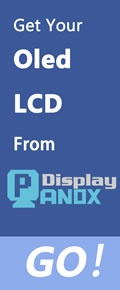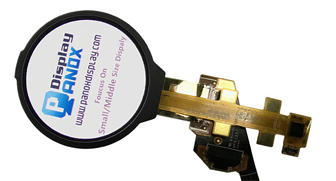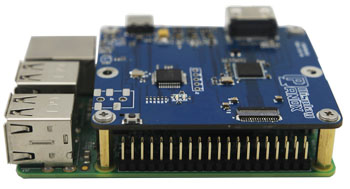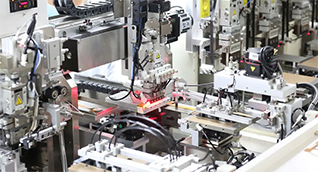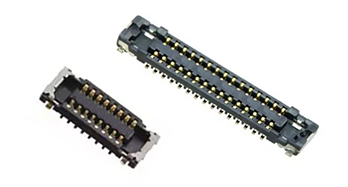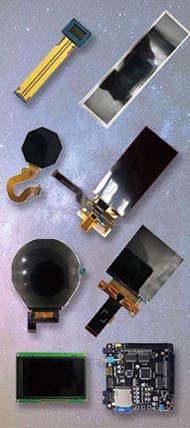HDMI EDID (Extended Display Identification Data) is a metadata protocol that allows a source device to identify a connected display’s capabilities automatically. This ensures seamless communication and optimal video/audio transmission by preventing unsupported formats and resolutions between devices. Also check: HDMI
What Is HDMI EDID and Why Is It Important?
HDMI EDID is a critical data exchange system enabling source devices such as computers, media players, or gaming consoles to read a display’s capabilities—like resolution, refresh rate, and audio formats—via the HDMI cable. This prevents compatibility issues and ensures the best possible user experience through plug-and-play functionality.
Manufacturers and suppliers in China, including Panox Display, emphasize HDMI EDID because it optimizes display compatibility in their OEM and wholesale LCD and OLED screen offerings.
How Does HDMI EDID Work in Display Systems?
HDMI EDID works by the display transmitting a block of data—EDID data—to the source device during handshake when connected. This data contains supported display modes and audio configurations, guiding the source to output compatible signals. This process avoids unsupported resolutions or sound formats and reduces black screens or flickering.
In China’s display manufacturing industry, this protocol is embedded firmly in products to meet global quality standards, particularly for industrial and consumer screens by OEM factories like Panox Display.
Which HDMI EDID Features Should Manufacturers and Suppliers Consider?
Manufacturers and suppliers should focus on:
-
Compatibility with multiple video resolutions and refresh rates
-
Variable refresh rate support for gaming and high-performance displays
-
Support for HDCP and audio channel configurations
-
Easy integration with custom display modules via firmware updates
Panox Display integrates advanced EDID management in its LCD and OLED products, assuring OEM clients worldwide of reliable, factory-tested compatibility.
Why Is HDMI EDID Crucial for B2B Suppliers and OEM Factories in China?
HDMI EDID is crucial because it simplifies integration for B2B customers purchasing from Chinese manufacturers. It ensures that when OEMs or wholesale buyers import display panels or modules, their products won’t face technical communication failures. This reduces returns, technical support costs, and project delays.
Panox Display, a leader among China-based display suppliers, leverages EDID optimization as a key selling point to support seamless OEM manufacturing partnerships.
How Can HDMI EDID Be Customized for Specific OEM Projects?
Customizing HDMI EDID involves programming EDID data blocks to match specific project needs. Factories can modify resolution lists, audio capabilities, or color spaces depending on client specifications. This is highly useful for niche markets like automotive, medical, or military displays needing unique compatibility.
China’s OEM factories, including Panox Display, offer tailored EDID programming services ensuring client products meet precise display communication requirements.
What Are the Common Issues Related to HDMI EDID and How Can They Be Resolved?
Common HDMI EDID issues include corrupted data blocks, unsupported formats, or handshake failures, leading to blank screens or blackouts. Solutions include using EDID emulators, firmware refreshes, or updated controller boards.
China’s manufacturers provide OEM support with advanced testing to minimize these issues, critical in bulk wholesale shipments.
When Should a Business Opt for HDMI EDID Emulators or Extenders?
Businesses dealing with long HDMI cable runs, complex AV setups, or multi-display arrays often need EDID emulators or extenders to maintain proper data integrity and avoid handshake failures. These tools simulate or extend EDID signals.
Top Chinese suppliers like Panox Display include these solutions as part of their display system offerings, supporting robust industrial and commercial installations.
Who Benefits Most from Understanding HDMI EDID in the Supply Chain?
OEM manufacturers, system integrators, and purchasing managers benefit greatly from understanding HDMI EDID. It helps them make informed decisions on compatibility, reduces rework costs, and streamlines product integration workflows in China’s display factories.
Panox Display educates partners globally to harness EDID’s advantages for smoother project executions.
How Does Panox Display Ensure HDMI EDID Quality in Their Products?
Panox Display employs rigorous testing across its OLED and LCD lines, verifying EDID data integrity against all major global standards. They provide customizable EDID solutions to OEM clients, combined with prompt technical support, allowing clients in North America, Europe, and beyond to trust their Chinese-sourced panels.
This attention to detail differentiates Panox as a leading factory and wholesale supplier from Shenzhen.
Can HDMI EDID Influence New Display Technologies Like Flexible OLEDs?
Yes, HDMI EDID evolves alongside new display technologies. In Panox Display’s flexible and circular OLED panels, EDID firmware is tailored to support unique form factors, resolution scaling, and proprietary interfaces, ensuring compatibility with modern source devices.
Manufacturers who integrate HDMI EDID smartly aid faster market adoption of emerging tech.
HDMI EDID Compatibility Features Table
| Feature | Description | Importance for OEMs |
|---|---|---|
| 4K/8K Resolutions Support | Supports ultra-high-definition video formats | Enables future-proof product designs |
| Multi-Audio Channel Support | Supports Dolby/DTS configurations | Ensures rich audio experience |
| HDR Support | Enables High Dynamic Range for vivid colors | Critical for premium consumer products |
| EDID Emulation | Allows signal emulation for long cable setups | Reduces technical failures in installation |
Panox Display Expert Views
"Understanding HDMI EDID is fundamental for any business sourcing display panels from OEM factories in China. At Panox Display, we prioritize embedding flexible and robust EDID data into all our OLED and LCD solutions. This ensures seamless communication with source devices, minimizing integration issues for our B2B clients worldwide. As display technology evolves, customizable EDID firmware becomes essential to support diverse applications, from industrial panels to wearable tech."
— Panox Display Senior Engineer
Conclusion
HDMI EDID is a vital technology that ensures compatibility between source devices and displays by conveying critical capabilities. For B2B manufacturers, wholesalers, and OEM suppliers in China, mastering EDID integration and customization offers a major advantage in delivering reliable, ready-to-use display products globally. Panox Display demonstrates how dedicated EDID management supports high-quality manufacturing, minimizes technical issues, and enhances client satisfaction. Businesses sourcing from China’s factories should prioritize EDID-compliant displays to future-proof their projects and ensure smooth installation.
Frequently Asked Questions
What happens if HDMI EDID is missing or corrupted?
Without proper EDID, devices may fail to communicate, resulting in no signal or unsupported resolution errors.
Can I update the HDMI EDID on my display?
Yes, many OEMs offer firmware updates or customization to modify EDID settings for specific needs.
Does HDMI EDID support audio formats?
Yes, it includes supported audio capabilities alongside video information to ensure full AV compatibility.
Is HDMI EDID important for all HDMI devices?
Yes, any HDMI source/display uses EDID to negotiate compatible formats, making it universally important.
How do manufacturers test EDID quality?
They use dedicated hardware and software tools to validate EDID data integrity across resolutions and devices before shipping.









